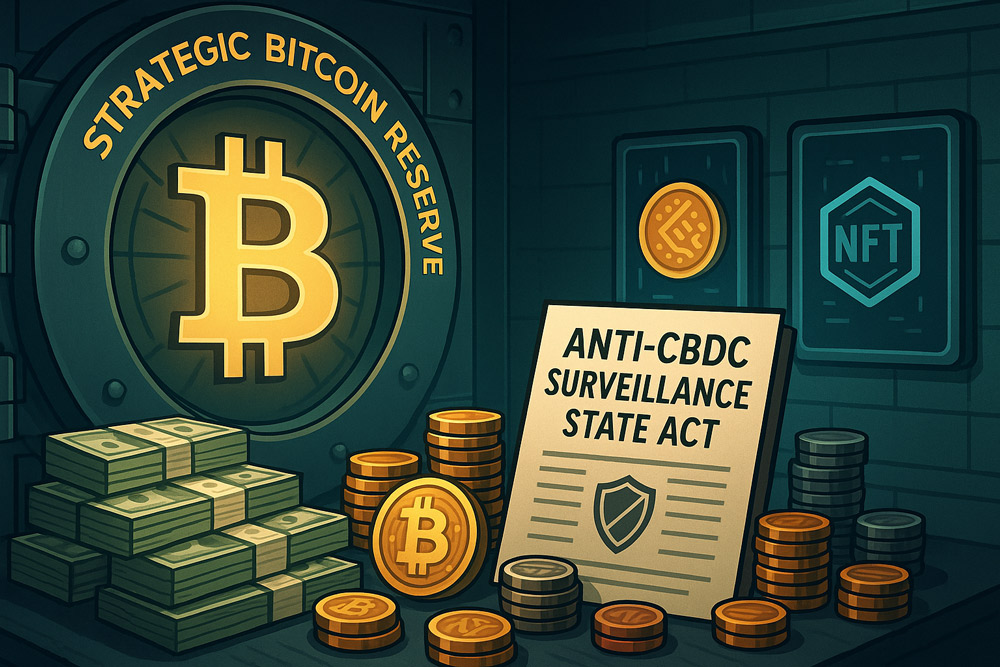For decades, the traditional financial system—anchored by fiat currency and regulated banks—has resisted the rise of digital currencies. The idea that money could move freely between people, without the need for banks or intermediaries, was seen as a threat. That resistance has been clear in aggressive regulatory crackdowns, especially under past administrations. But under the current U.S. government, the tide has turned dramatically. Today, digital currencies are no longer just tolerated—they are being actively integrated into the mainstream economy through a wave of new legislation and executive action.
A Policy Shift That Favors Decentralization
In early 2025, the current administration took major steps to reverse years of hostility towards cryptocurrencies. One of the most significant moves came in the form of Executive Order 14178, titled “Strengthening American Leadership in Digital Financial Technology”. This order laid the groundwork for clear regulatory structures, banned the creation of a government-issued central bank digital currency (CBDC), and established the Strategic Bitcoin Reserve and Digital Asset Stockpile, funded through seized assets rather than taxpayer money.
This order not only positioned the U.S. as a potential leader in blockchain innovation but also signaled a broader ideological shift: away from centralized control and toward individual sovereignty in finance.
The FIT21 Act and the GENIUS Act
Following the executive order, Congress began enacting legislation to formalize the place of cryptocurrency in the U.S. economy. In May 2024, the House passed the Financial Innovation and Technology for the 21st Century Act (FIT21), which clearly defined the roles of the Securities and Exchange Commission (SEC) and Commodity Futures Trading Commission (CFTC) in digital asset regulation—ending years of ambiguity over which agency governs what.
Then came the GENIUS Act, signed into law in July 2025. This act introduced sweeping regulations for stablecoins—digital currencies pegged to the U.S. dollar. Key provisions include:
-
Mandatory one-to-one backing of stablecoins by dollars or U.S. Treasury bills
-
Creation of a federal licensing system open to banks, credit unions, and non-bank issuers
-
Legal clarity that stablecoins are neither securities nor commodities
-
Consumer protections in the event of issuer insolvency
These measures are designed not just to regulate the industry, but to legitimize it. As Harvard Law School notes, the GENIUS Act “could make digital currency more stable, more transparent, and ultimately more useful to average Americans”.
Anti-CBDC Legislation and the Clarity Act
In the same legislative push, the House passed the Anti-CBDC Surveillance State Act, which bars the federal government from issuing a central bank digital currency. Critics have long feared that such a currency could be used for financial surveillance, undermining privacy. The law aligns with the administration’s broader message: support for private innovation, not government-controlled digital finance.
Also awaiting Senate approval is the Clarity for Digital Tokens Act, which aims to define the legal status of digital tokens clearly. If passed, it would give both investors and developers the confidence needed to operate in the U.S. without fear of shifting regulatory interpretations.
Institutional Resistance and Regulatory Reversals
Of course, not everyone is happy with these changes. Banks and fiat institutions, long the gatekeepers of the financial world, are increasingly sidelined. By removing their monopoly over money movement and asset custody, digital currency threatens the very core of the traditional financial system. This explains their historical opposition—and it also explains why these new laws are so consequential.
The shift isn’t just legislative; it’s institutional. The SEC, now led by Paul Atkins, has pulled back from its enforcement-heavy stance. Instead of targeting crypto firms with lawsuits, the SEC has launched “Project Crypto” to develop practical frameworks for tokenization, digital securities, and smart contracts.
The Department of Labor has also reversed previous restrictions, now allowing employers to include cryptocurrency options in 401(k) retirement plans. This would have been unthinkable just two years ago.
The Bigger Picture: Strategic Reserve and Global Signaling
Perhaps the most symbolic move was the creation of the Strategic Bitcoin Reserve. Just as countries maintain oil and gold reserves, the U.S. is now openly holding Bitcoin and other digital assets—not only as a hedge but as a national strategic resource.
This is more than economic pragmatism; it’s a statement of intent. It tells the world that the United States sees crypto not as a toy or a threat, but as part of its financial infrastructure.
Final Thoughts
The current administration has taken digital currency from the fringes and brought it into the regulatory core of U.S. financial policy. Laws have been passed. Oversight has been clarified. Central bank alternatives have been rejected. In short, crypto is no longer being viewed as a problem to eliminate but as a sector to support and scale.
Banks and fiat-based institutions are watching closely—and not without concern. The freedom to exchange value without them is becoming more legally protected by the day.
As these new laws take root and further guidance is issued, one question remains: Will the public embrace this opportunity for financial self-determination, or will we let the old gatekeepers redefine the rules once more?
